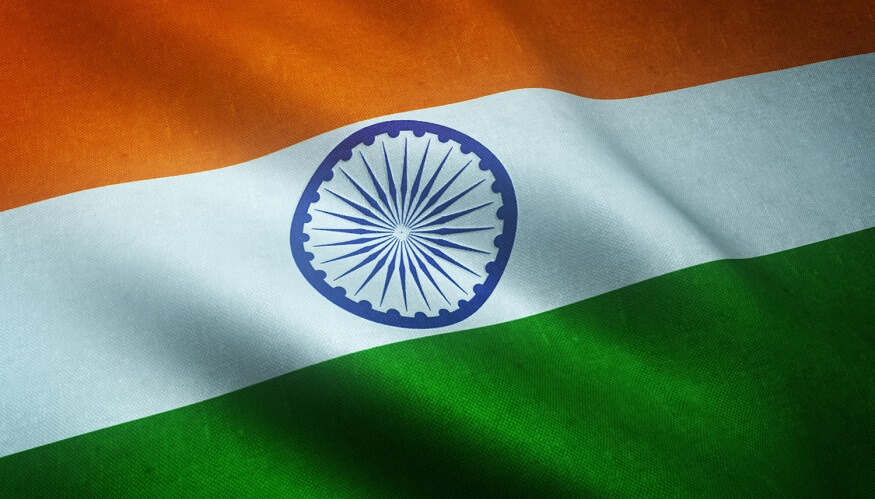India is a vastly diverse country. In terms of religion, languages, castes, cuisines, clothing, and many other cultural aspects. Indians practise six prominent religions (Hinduism, Islam, Christianity, Sikhism, Buddhism, and Jainism) among many other religions and tribes present across India. Indians speak 22 prominent languages. 1100+ castes exist in India. In addition to this, cultural traits such as food, clothing, festivals, etc. North, South, East and West of India. In all this diversity, the one thing that unites us all is our Indian identity. The Indian national flag is a key tenet which unites the 1.4 billion Indians into one emotion of patriotism. The Indian national flag represents the hopes and aspirations of all Indians. It is a symbol of our national pride and patriotism. It brings us all together into one sense of unity within all the diversity.
Let’s look at some key aspects of the history of the Indian National Flag.
Evolution of the Indian Flag
A flag is a symbol of a free nation. Every free nation in the world will have its national flag. The first Indian flag was hoisted on August 7, 1906, at Parsee Bagan Square (Green Park), Kolkata. The Indian flag in 1906 was composed of three horizontal stripes coloured green, yellow and red in that order from top to bottom. The green stripe had lotuses imprinted, the central yellow stripe had Vande Mataram imprinted in Hindi, and the bottom red stripe had images of the sun and the moon.
Another design of the flag was hoisted by Bhikaiji Cama in 1907 in Paris by her group of revolutionaries. This flag was quite similar to the 1906 flag with seven stars symbolising the Saptarishi replacing the seven lotuses in the 1906 flag. Another variation of the flag was hoisted by Dr Annie Besant and Lokmanya Tilak during the Home Rule movement in 1917. This flag contained five red and four green stripes with the British union jack in the top left corner. This flag also had the seven Saptarishi stars and a crescent with a star at the top right corner.
The first design for the official national flag for India is attributed to Pingali Venkayya in 1921. The design was presented to Mahatma Gandhi and the colours red and green were meant to symbolise Hindus and Muslims, the two prominent religions in India. Mahatma Gandhi suggested the addition of white colour to represent other communities in India and the addition of a charkha to symbolise the progress of the nation. The Indian flag went through various alterations until it was officially adopted in 1931. Very similar to the current-day tricolour, the only difference being that the 1931 flag had a charkha in place of the Ashok Chakra. India’s national flag in its current form, known as the tricolour, or Tiranga, was adopted on July 22, 1947, the eve of India’s independence from British rule on 15th August 1947.
Also Read: Indian Independence Day
Indian flag colours and composition
The tricolour, as the name signifies, has three equal-sized rectangular panels. The colour of the top panel is India Saffron (Kesari), the middle panel is White and the bottom panel is India Green. There is a navy-blue coloured Ashok Chakra at the centre of the White band. The saffron colour signifies strength and courage, the white colour symbolises peace and truth, and the green colour signifies fertility, growth and auspiciousness.
History of Ashok Chakra
The Ashok Chakra or the Dharma Chakra, or the “wheel of law” was adopted from the Sarnath Lion Capital built by the 3rd-century Mauryan Emperor Ashoka. The Ashok Chakra has 24 equally spaced spokes symbolising the constant movement of time. The Dharma Chakra signifies that there is life in movement and death in stagnation.
The Flag Code
Given the emotions 1.4 billion Indians attach to the tricolour, its respect was of paramount importance. With this view, certain do’s and don’ts were defined about the national flag under the Emblems and Names (Prevention of Improper Use) Act of 1950 and the Prevention of Insults to National Honour Act of 1971. Given the highest reverence for patriotic Indians, all these disparate acts were combined to form a Flag Code of January 26, 2002. Under the modified flag code, citizens were allowed to hoist the national flag on top of their houses or offices on any day. Earlier, the citizens were only allowed to hoist the national flag on national days such as Independence Day and republic day. The Flag Code was further modified on December 30. 2021.
Cloth of the Indian National Flag
The Indian National Flag was initially meant to be hand spun and handwoven out of wool/cotton/silk khadi bunting. Currently, even machine-made flags of polyester are also allowed.
Dimensions
The tricolour is rectangular in shape with a length-to-width ratio of 3:2. The recommended sizes for the tricolour are as follows:
|
Flag Size No. |
Dimension (mm) |
|
1 |
6300 X 4200 |
|
2 |
3600 X 2400 |
|
3 |
2700 X 1800 |
|
4 |
1800 X 1200 |
|
5 |
1350 X 900 |
|
6 |
900 X 600 |
|
7 |
450 X 300 |
|
8 |
225 X 150 |
|
9 |
150 X 100 |
Appropriate sizes must be chosen for display. The 450 X 300 is intended for aircraft on VVIP flights, 225 X 150 for motor cars, and 150 X 100 for table flags.
Authorised manufacturing of the Indian National Flag
The Khadi unit of the Karnataka Khadi Gramodyoga Samyukta Sangha (KKGSS) is authorised to manufacture the Indian National Flag at their manufacturing facility in Garag village near Dharwad City of Karnataka. They are also the sole suppliers of the Indian National Flag to the entire country certified by The Khadi and Village Industries Commission.
A feeling of pride in our nation holds us all together. Reverence of the Tiranga unites us all into one emotion – love and respect for this great nation.
For more such informative blogs, please visit our website.










